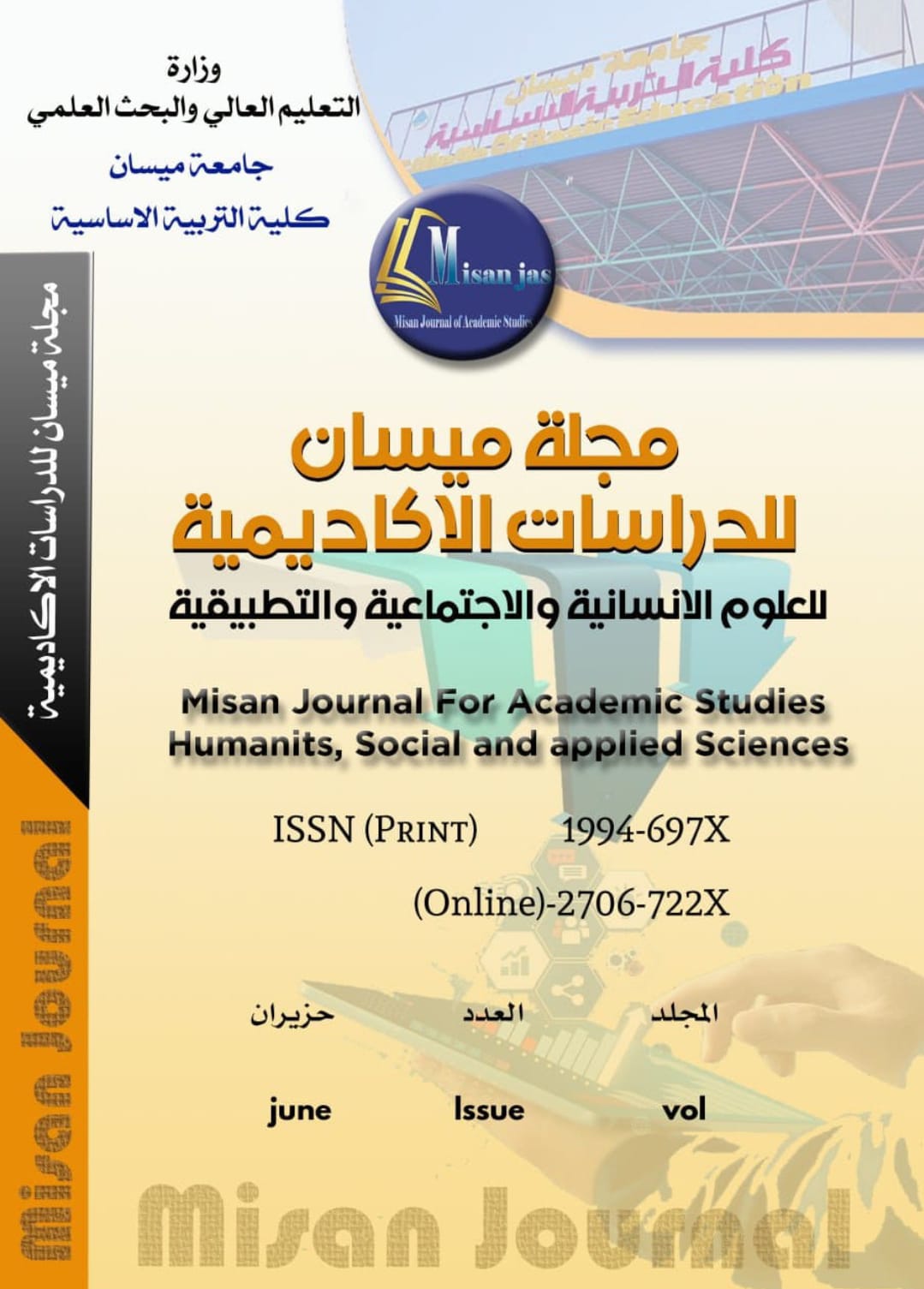Abstract
Text scholars show that linking is the consistency between the vocabulary and the sentences that make up the text, and this coordination comes through linguistic means that connect the components of the text, these linguistic means achieved compatibility in both the structural and semantic types. Syntactic consistency is achieved by linguistic means such as deletion, substitution, and conjuncture, and the study was divided into three sections: “In The First Topic we dealt with the definition of the author and the book, and The Second Topic contained a simple vision of linking tools, while The Third Topic“ An applied study on linking tools. Then we concluded the research with some of the findings of the research, the effect of these tools on linking text units to each other from two sides: The first: formality; Where it included verifying the connection between the sentences on the formal level of the text. The second: semantic, which shows the clarification of the linking relationship between the sentences, which led to the understanding of the textual meaning in general. Research
Abstract
يرى علماء النص إنّ الربط هو الاتساق الحاصل بين المفردات والجمل المكوّنة للنص، وهذا الربط يأتي من خلال وسائل لغوية تصل بين العناصر المكوّنة للنص، وهذه الوسائل اللغوية حققت الانسجام بنوعيه التركيبي والدلالي، فالاتساق التركيبي يتحقق بوسائل لغوية مثل الحذف، والاستبدال، والعطف، والإحالة وغيرها من الروابط وقد قُسمّت الدراسة إلى ثلاث مباحث تناولنا في المبحث الأول التعريف بالمؤلف والكتاب أما المبحث الثاني فقد أشتمل على نظرة بسيطة عن أدوات الربط أما المبحث الثالث فقد تناولنا فيه دراسة تطبيقية عن أدوات الربط ثم بعد ذلك ختمنا البحث ببعض النتائج التي توصل إليها البحث ومنها أنّه اتّضح أثر هذه الأدوات في ربط وحدات النصّ بعضها ببعض من جهتين؛ الأولى: شكليّة؛ حيث تضمنت تحقّيق الربط بين الجُمل على المستوى الشكلي للنص. الثانية: دلاليّة حيث عملت على إيضاح العلاقة الرابطة بين الجُمل، ممّا أدى إلى فهم المعنى النصيّ على نحو عام. منهج البحث وصفي-تحليلي.
Keywords
أدوات الربط، النص، زكي نجيب محمود، جنة العبيط.
